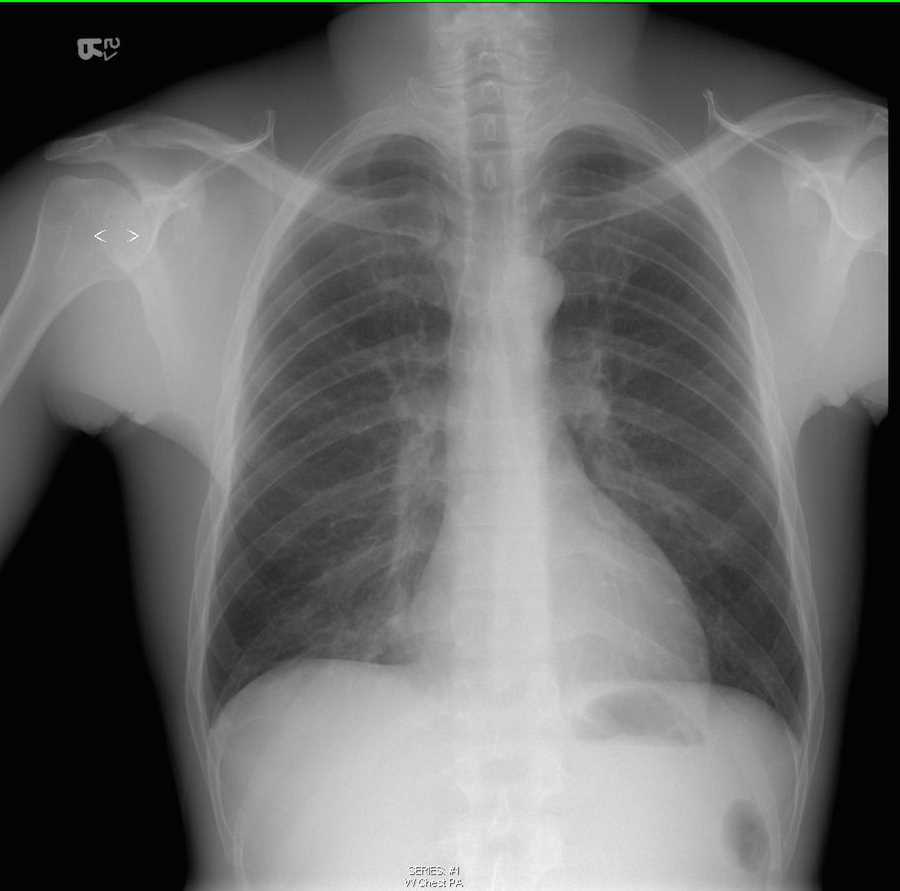

Rheumatoid arthritis (RA-associated COP).Vaping: On October 17, 2019, the American Journal of Clinical Pathology reported that lung biopsies from patients with vaping-associated pulmonary illness show acute lung injury patterns, including organizing pneumonia.Chemical exposure, most notably to diacetyl.Drugs: antineoplastic drugs, erlotinib, amiodarone.Pulmonary infection by bacteria, viruses and parasites.Symptoms are usually subacute, occurring over weeks to months with dry cough (seen in 71% of people), dyspnea (shortness of breath)(62%) and fever (44%) being the most common symptoms. This presentation is usually so suggestive of an infection that the majority of patients with COP have been treated with at least one failed course of antibiotics by the time the true diagnosis is made. difficulty breathing, cough) symptoms in association with filling of the lung alveoli that is visible on chest x-ray. The classic presentation of COP is the development of nonspecific systemic (e.g., fevers, chills, night sweats, fatigue, weight loss) and respiratory (e.g. Emphasize the cryptogenic nature of the disease.Avoid confusion with constrictive bronchiolitis.Avoid confusion with bronchiolitis obliterans, which may not be visualized in every case of this disease.The American Thoracic Society and the European Respiratory Society hold that "cryptogenic organizing pneumonia" is the preferred clinical term for this disease for multiple reasons: The phase of resolution and/or remodeling following bacterial infections is commonly referred to as organizing pneumonia, both clinically and pathologically. "Organizing" refers to unresolved pneumonia (in which the alveolar exudate persists and eventually undergoes fibrosis) in which fibrous tissue forms in the alveoli. However, diagnosis is suspected after there is no response to multiple antibiotics, and blood and sputum cultures are negative for organisms. The clinical features and radiological imaging resemble infectious pneumonia. COP was first described by Gary Epler in 1985. It is often a complication of an existing chronic inflammatory disease such as rheumatoid arthritis, dermatomyositis, or it can be a side effect of certain medications such as amiodarone. It is a form of idiopathic interstitial pneumonia. H&E stain.Ĭough, labored breathing, fever, fatigue, unexpected weight loss Ĭryptogenic organizing pneumonia ( COP), formerly known as bronchiolitis obliterans organizing pneumonia ( BOOP), is an inflammation of the bronchioles ( bronchiolitis) and surrounding tissue in the lungs. The artery associated with the obliterated airway is also seen (far left of the image).

Micrograph showing a Masson body (off center left/bottom of the image – pale circular and paucicellular), as may be seen in cryptogenic organizing pneumonia. Medical condition Cryptogenic organizing pneumoniaīronchiolitis obliterans with organizing pneumonia, idiopathic interstitial pneumonia


 0 kommentar(er)
0 kommentar(er)
